
2021 is winding to a close, yet the COVID-19 pandemic remains prevalent in the United States. The Centers for Disease Control and Prevention (CDC) reported a total of 45,571,532 COVID cases in America as of October 27, 2021. Conversely, 190,990,750 million Americans were fully vaccinated by October 27, while 14,429,771 citizens received booster shots by that date.
United States COVID-19 vaccination efforts have been in full swing since the winter of 2020 and the spring of 2021. Many Americans traveled throughout the year (either to reunite with friends and family or for work-related reasons) as COVID cases surged and waned. The CDC released and updated numerous safety guidelines in 2021 as COVID-19 variants like Delta and Mu became more prevalent.
In June 2021, the CDC announced that fully vaccinated individuals — those who received either two doses of Pfizer or Moderna’s vaccine or a single shot of the Johnson & Johnson vaccine — could stop wearing masks in (most) public spaces. However, mask mandates have been reinstated in most states as COVID cases continue to fluctuate.
The (now-outdated) June guidance from the CDC, which many local state and federal officials abided by, hinged on trusting that those around you were being honest about their vaccination status. Those guidelines, however, didn’t pertain to immunocompromised individuals, at-risk elderly folks, and unvaccinated children. Just a few weeks later — in the wake of Delta variant-related surges and breakthrough cases — the CDC announced in July 2021 that even fully vaccinated individuals should return to masking up in public.
Summer 2021 wasn’t quite the “return to normalcy” that many were hoping for, and, instead, reinforced the challenges that the pandemic presents. Many people who have long faced systemic barriers, misinformation, mistreatment, and other inequities when it comes to healthcare, are still unsure about getting vaccinated. Nonetheless, businesses have reopened their offices, and many schools have physically reopened their doors. Vaccine producers have doubled their efforts to create enough vaccines for everyone, though many people still lack access to these vaccines both nationally and globally.
The fall of 2021 was fraught with a wealth of changes; vaccination mandates, back-to-school policies, and new variants of COVID-19, just to name a few. Today, we’ll discuss some of the more recent updates regarding the pandemic, including booster shot eligibility, vaccination eligibility for children, and winter travel policies.
Editor’s Note: While we update this article with the latest information regarding the COVID-19 pandemic, vaccine rollout, mask guidance, and more, be sure to visit the Centers for Disease Control and Prevention (CDC) and World Health Organization (WHO) websites for the most up-to-date announcements.
Mask-Wearing and Vaccination Mandates: Here’s What We Can Expect
As mentioned above, policies regarding masks are constantly in flux. The CDC is encouraging everyone to mask up this fall while visiting public spaces. While the CDC’s guidance doesn’t override local, state, federal, or tribal law, many states and cities have been quick to adhere to the agency’s latest suggestions. The number of new COVID cases has dropped below 65,000 per day in America. However, citizens are still encouraged to wear masks in public spaces.
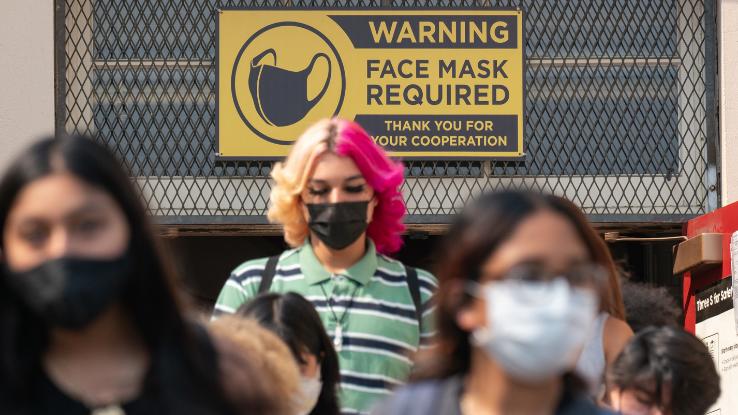
In San Francisco, California, for example, an impressive 76.91% of people were fully vaccinated as of October 26. Nonetheless, hundreds of bars and restaurants banded together to require patrons not only to wear masks but provide vaccination cards (or negative COVID-19 tests) at the door. New York City and San Francisco became the first cities in the country to require proof of vaccination, to prevent the spread of coronavirus in visit bars, restaurants, or other public places.
Huge companies, from Disney to United Airlines, have required employees to receive the COVID-19 vaccine, falling in line with President Joe Biden’s vaccine mandate for federal employees. Meanwhile, Massachusetts — a state with very high vaccination rates — isn’t under a statewide mask mandate, with the governor citing those vaccination numbers as the reason why.
On the other end of the spectrum, states with low vaccination rates, loose mask-wearing policies, and large populations are experiencing a surge of COVID-19 cases. As of November 8, 2021, the state with the
highest rate of COVID-19 cases per capita
was North Dakota (19,925 cases per 100,000 people), followed by Alaska and Tennessee. Federal officials around the nation, like
California governor Gavin Newsom
are urging citizens to protect their communities with vaccinations and booster shots. Ultimately, staying aware, informed, and
considerate of others and their safety in public spaces
remains just as crucial as ever before.
How Are Schools Handling COVID-19 Concerns?
When it comes to vaccine and mask mandates in schools, guidance is just as varied. It’s clear that in-person learning is a priority for many schools across the country, but returning to the classroom safely poses some challenges. Currently, the CDC recommends that all students and staff over the age of two wear masks while indoors, regardless of vaccination status, and maintain three feet of physical distance whenever possible. The CDC also recommends frequent testing, temperature checks, hand-washing and staying home when one is feeling unwell.
Mask mandates have become increasingly popular in schools across the country, but vaccine mandates for teachers, staff and others who are of age are less ubiquitous. “Vaccination is the leading public health prevention strategy to end the COVID-19 pandemic,” the CDC states on its website. “Promoting vaccination can help schools safely return to in-person learning as well as extracurricular activities and sports.”
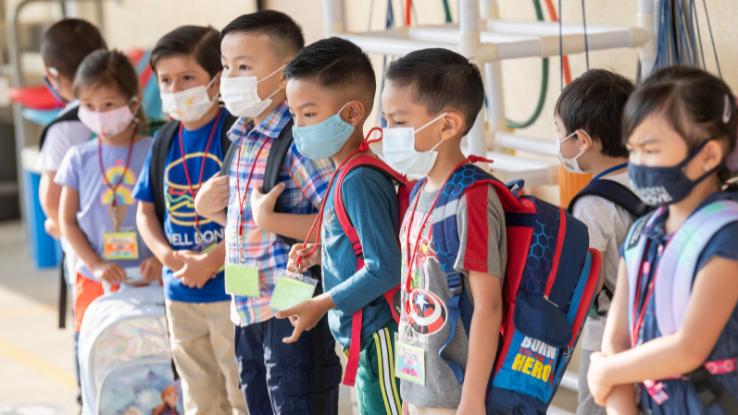
And while colleges and universities are trying to incentivize eligible students and staff to get vaccinated, many K-12 teachers have been fighting for vaccine mandates since late winter of this year, adamant on being fully protected before returning to in-person teaching. Eager to boost overall vaccination rates in schools, California became the first state to require that all teachers and staff in both public and private K-12 schools get vaccinated (or, alternatively, submit weekly COVID-19 tests), a strategy that President Biden’s chief medical advisor on COVID-19, Anthony Fauci, has openly supported.
In early July, the CDC noted the importance of vaccinating eligible students with
reporting that, at the time of the announcement, “just 1 out of 3 kids ages 12 to 17 [had] received a COVID-19 vaccine.” Now, many folks are left wondering why the COVID-19 vaccine hasn’t been added to the roster of shots students are required to have before enrolling in school. However, now that the U.S. Food & Drug Administration (FDA) has given the Pfizer vaccine full approval, we may start to see states adding the COVID-19 vaccine to their
lists of mandated school vaccines
.
COVID-19 & Travel: Will the Holidays Be Impacted?
Undoubtedly, summer travel was not what many folks hoped it would be after a year and a half of staying home. With a stark inequity in global vaccine distribution efforts, many Americans vacationed locally, foregoing international travel altogether. And while there was a window of opportunity for fully vaccinated vacationers in May and June, that window shut rather quickly due to the global surge in Delta variant-related cases.
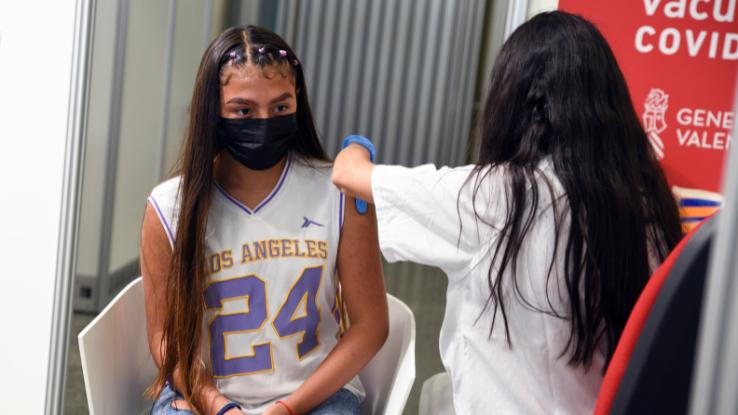
It’s currently still difficult to predict how travel and large-scale events, like music festivals and holiday celebrations, will be shaped by the pandemic. Delta variant cases are receding nationwide, prompting health professionals to reevaluate the Delta strain’s virulence, but the pandemic will likely impact holiday travel plans this fall. Organizers behind two of the country’s largest music festivals, Coachella and Stagecoach, announced that attendees will be required to show proof of vaccination next year. Meanwhile, air travel still requires passengers to wear masks. So, large-scale fall events aside, will you be able to make it home for the holidays this year? That depends on a variety of largely unpredictable factors.
What Do We Know About COVID-19 Vaccine Boosters?
Will vaccinated folks — especially immunocompromised folks — need boosters? For many Americans who received their first shots months ago, this question is becoming increasingly pressing. But much like other aspects of the pandemic, the official word varies. President Biden urged Americans to receive boosters once they qualified. But the WHO voiced concerns about global vaccine equity, suggesting that the primary focus should be on — and the bulk of resources should go to — distributing first (and second) shots to folks who haven’t had the chance to be vaccinated yet. The WHO also emphasized that immunocompromised people should receive booster shots as soon possible, as breakthrough infections are “highly disproportionately represented by those people.”
The CDC currently recommends that people who fall into one of the following groups should seek booster shots 6 months or more after their first dosages:
- People who are 65 years or older
- People who are 18+ who live in long-term care settings
- People who are 18+ with underlying medical conditions
- People who are 18+ and work or live in high-risk settings
Moreover, the CDC also endorses a “mix and match dosing for booster shots” — if you got Pfizer, for example, you can turn to Moderna for your booster shot.
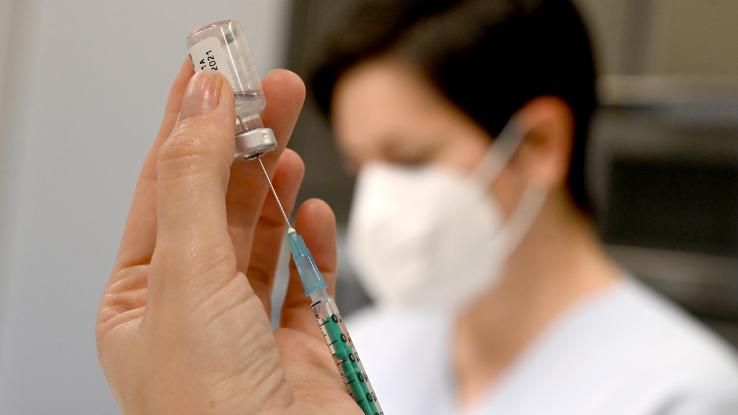
The CDC that’s anyone “12 years or older” should become vaccinated as soon as possible. Local pharmacies and child healthcare providers can readily and safely provide vaccinations for children. The FDA has also supported Pfizer’s vaccine for children between the ages of 5 and 11 years old. Dr. Mark Sawyer, on behalf of the FDA, said that Pfizer’s vaccine could be “a tool in our armamentarium for high risk children”.
For more information on who should seek boosters, follow the CDC’s latest guidance.
The Fourth Wave: Will There Be Another COVID-19 Surge This Fall?
As of October 26, 2021, 58.0% of Americans are fully vaccinated. As the CDC has noted, the most effective way to keep hospitalizations down is to focus on vaccination, especially since the Delta variant, a strain of the virus that’s twice as transmissible as the original strain, has made up the bulk of fourth wave cases.
The Mu variant is much more enigmatic than the Delta variant. However, the WHO deemed Mu a “variant of interest” on August 31, 2021. Mu has largely appeared in countries like Ecuador and Colombia. However, professionals believe that this variant may be more resilient to vaccines and natural antibodies.
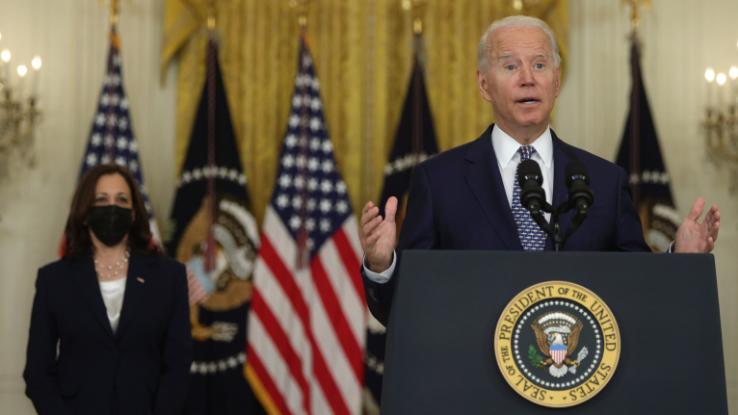
So, will the surges continue into the fall — and will there be another wave? It’s not entirely possible to tell right now. COVID-19 cases are declining in America, but another surge will always be a looming threat while large swathes of the country remain unvaccinated.
Of course, there are other factors that haven’t quite been addressed: How will flu season play into the ongoing pandemic? Should officials reinstate shelter-in-place measures or other public health strategies to curb the transmission of COVID-19 and its variants? “Unlike a year ago, we have the ability to save lives and keep our economy growing,” President Biden (@POTUS) tweeted in early August. “We know we can dramatically lower the cases in the country. We can do this. Get vaccinated.”
Indeed, “get vaccinated” may adequately summarize President Biden’s COVID-19 Action Plan. The six pillars of Biden’s plans include “vaccinating the unvaccinated”, “protecting our economy”, and increasing testing and requiring masking”.






